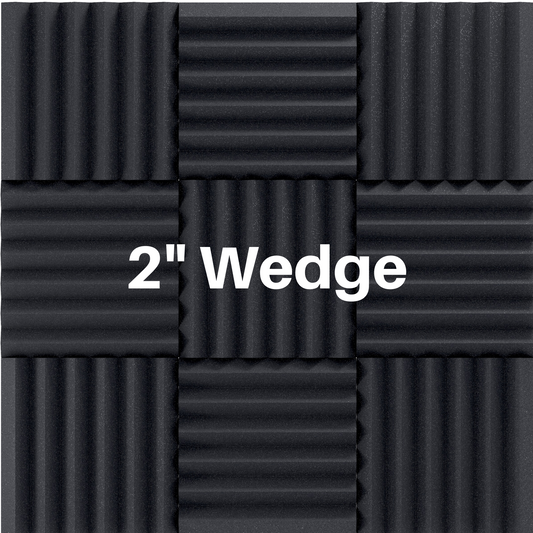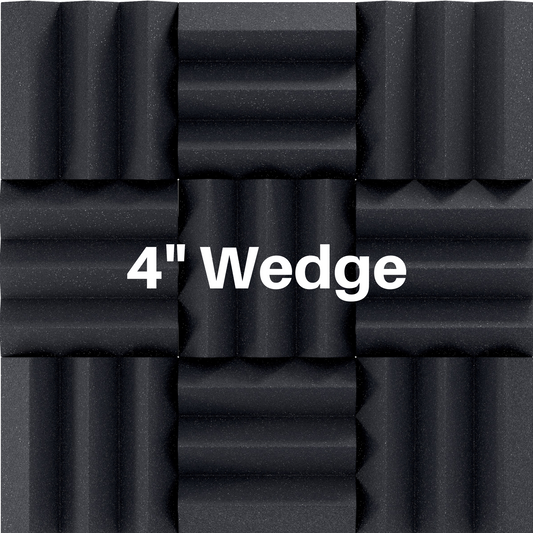What Are Room Modes?
Share
CLICK HERE to check out our free Room Mode Calculator.
What Are Room Modes?
In this post we are going over room modes. This is something that affects every room if you have parallel flat surfaces. Most of us are working with rectangular or square rooms so understanding room modes is important for all of us.
A room mode is a specific frequency at which sound waves resonate in an enclosed space, such as a room. These "resonant frequencies" are determined by the physical properties of the room, such as its dimensions, shape, and the materials it is made of. Small rooms will have different modes than larger rooms.
The image below shows the room modes based on the fundamental frequency of a room. Mode 1 is 0.5 wavelengths, Mode 2 is 1 wavelength, mode 3 is 1.5 wavelengths, etc. The fundamental frequency of a room is the lowest frequency at which a room will naturally resonate. It is also known as the "first harmonic" or "modal frequency".

When sound waves at resonant frequencies are introduced into the room, they will create patterns of vibration known as "standing waves". These standing waves produce peaks and valleys of sound pressure at specific locations within the room, which can result in "dead spots" or "hot spots" of sound where the sound level is much louder or quieter than in other parts of the room.
In simple terms, room modes are the frequencies that produce the most resonance in a room and can make the sound uneven. It can create areas where the sound is louder or quieter than it should be, or where certain frequencies are amplified or muted.
Do you want to try to record in a room where certain frequencies are boosted and others are nearly cancelled out? NO! This gives you poor quality recordings!
Acoustic engineers and audio professionals use the information of room modes to design and optimize sound systems, by identifying and treating the problem areas, to minimize the standing waves and optimize the sound quality in a given room.
How To Measure Room Modes
There are several ways to measure room modes, here are a few common methods:
Modal Analysis:
This is a computational method and is the most popular. This method can be performed without physically being inside the room. In this method the exact room dimensions and room materials are used to complete calculations in order to find the room modes. There is also simulation software to model the behavior of sound waves in a given room based on its dimensions and material properties. The software can calculate the modes of resonance and corresponding frequency.
Spectral Analysis:
This method uses a microphone and a frequency analyzer to measure the sound pressure levels at different frequencies within the room. The frequency analyzer will display a graph of the sound pressure levels over a range of frequencies, and the room modes will appear as peaks or valleys in the graph. These peaks represent the frequencies at which the sound pressure is highest and are the result of standing waves.
Chirp Excitation:
It uses a signal generator that produces a "chirp" which is a signal that increases or decreases in frequency over time, which allows for the whole frequency range to be covered. With this method, you can use a microphone or a set of microphones around the room to capture the sound field, and then process the data to extract the room modes.
Impulse Response:
This method uses a signal generator to produce an impulse, like a sound of a starter pistol, which excites the room and generates a response that is captured with a microphone. Then, the impulse response is processed using techniques such as frequency-domain analysis or time-frequency analysis to identify the room modes.
Whichever method you choose, it's important to keep in mind that the room mode measurement can be affected by the presence of people, furniture, and other objects.
How To Calculate Room Modes
Calculating room modes can be done with a good old fashion calculator. The steps and formulas are below. However, these calculations are tedious and you probably don't want to do long form math.
CLICK HERE to check out our free Room Mode Calculator to save some time!
Below are the steps to calculating room modes if you want to try for yourself.
- Measure the length, width, and height of the room in feet.
- Calculate the frequency for each dimension.
- Frequency = Speed Of Sound / Wavelength In Meters
- Speed of sound = 344 m/s
- Calculate the modes for each dimension. Take the frequency from the step above to find the modes.
- Mode 1 = 0.5 wavelength
- Mode 2 = 1 wavelength
- Mode 3 = 1.5 wavelengths
- Mode 4 = 2 wavelengths
- etc
Please note that these steps and formulas are for calculating the axial modes of a room, which are the most prominent and audible. There are also tangential and oblique modes that can be calculated using similar formulas.
Different Types Of Room Modes
There are three main types of room modes: axial, tangential, and oblique.
-
Axial modes: These are the most prominent and audible room modes, and they occur when sound waves are parallel to the room's three main dimensions (length, width, and height).
-
Tangential modes: These occur when sound waves are perpendicular to two of the room's dimensions, and parallel to the third. For example, a tangential mode can occur when sound waves are parallel to the width and height of a room, but perpendicular to the length.
-
Oblique modes: These occur when sound waves are not parallel to any of the room's dimensions. They are typically less audible than axial and tangential modes, but they can still have an impact on the overall sound quality of a room.

How To Treat Room Modes
There are several ways to treat room modes in a small room. The simplest approach would be to use sound-absorbing materials to reduce the amplitude of the modes. This can be done by adding acoustic panels and bass traps to the corners and/or walls of the room.
Another approach is to move furniture and other objects around the room to change the way sound reflects off the surfaces, which can help to reduce the severity of the room modes. Additionally, you can experiment with the positioning of speakers and listener, and adjust the equalization settings of the audio system, to help minimize the impact of room modes.
Need help with your room?
Schedule a free consultation with us or fill out our free room analysis form!
Read more:
What Is Transmission Loss Of Sound ?
What Is Noise Reduction Coefficient (NRC) ?
Home Theater Acoustic Treatment - DIY Video Instructions
Acoustic Treatment For Home Recording Studios - Multiple Design Ideas





2 comments
Thanks Caleb, we made the revisions.
You refer to the speed of light instead of sound in a few places.
Speed of sound ~344 m/s
Speed of light ~300,000,000 m/s